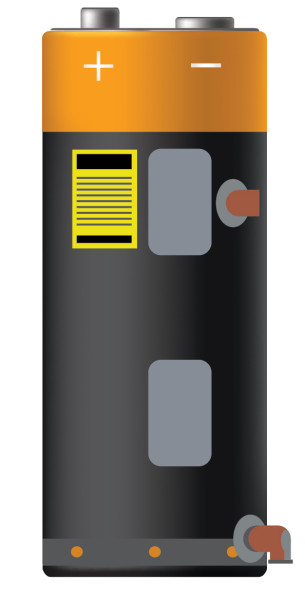 Energy storage—the holy grail of the electric power industry—that will save consumers money and give electric cooperatives new flexibility might be as close as your water heater.
Energy storage—the holy grail of the electric power industry—that will save consumers money and give electric cooperatives new flexibility might be as close as your water heater.
So says new research from The Brattle Group, a global economic consulting firm.
NRECA, the Natural Resources Defense Council (NRDC), Great River Energy, and the Peak Load Management Alliance commissioned the study, “The Hidden Battery,” to launch a “community storage” initiative to aggregate battery-like features of appliances.
Electric water heaters rank third largest in residential electricity consumption, behind space cooling and lighting, according to the research released in February. “The magnitude of this relatively untapped resource is significant.”
Advanced community storage strategies can equip electric co-ops to beat peak prices and save their members as much as $200 a year—enough to pay for a grid-enabled water heater within five winters, says the study. Further, these water heaters can interact with the electric grid to help with balancing and frequency response.
Great River Energy controls more than 110,000 residential water heaters that can store more than 1 gigawatt- hour of electricity. Between 11 p.m. and 7 a.m., 65,000 electric thermal water heaters mass enough hot water for an entire day; 45,000 water heaters are used to shave peak demand.
“We believe there’s a battery hidden in basements all across our service territory,” says Gary Connett, director of member services at the Maple Grove, Minn., G&T.
Community storage also is an important tool for meeting Minnesota’s “25 percent by 2025” renewable energy standard that is resulting in more variable generation resources.
“When the wind is blowing or the sun is shining, large-capacity water heaters can be enabled to make immediate use of that energy to heat water to high temperatures,” Connett says. “Water heaters can be shut down when renewables are scarce and wholesale costs are high.”
NRECA worked closely with NRDC in 2015 to achieve federal law that preserves the production of large grid-enabled water heaters that 250 electric co-ops already rely on for energy savings programs.
[panel title="Popular%20Science:%20Your%20Water%20Heater%20Can%20Become%20a%20High-Power%20Home%20Battery"]
NRECA’s Keith Dennis and Popular Science discuss how homeowners may already be in possession of a high-power home battery—their water heater. Read more, and watch the video.
[/panel]
